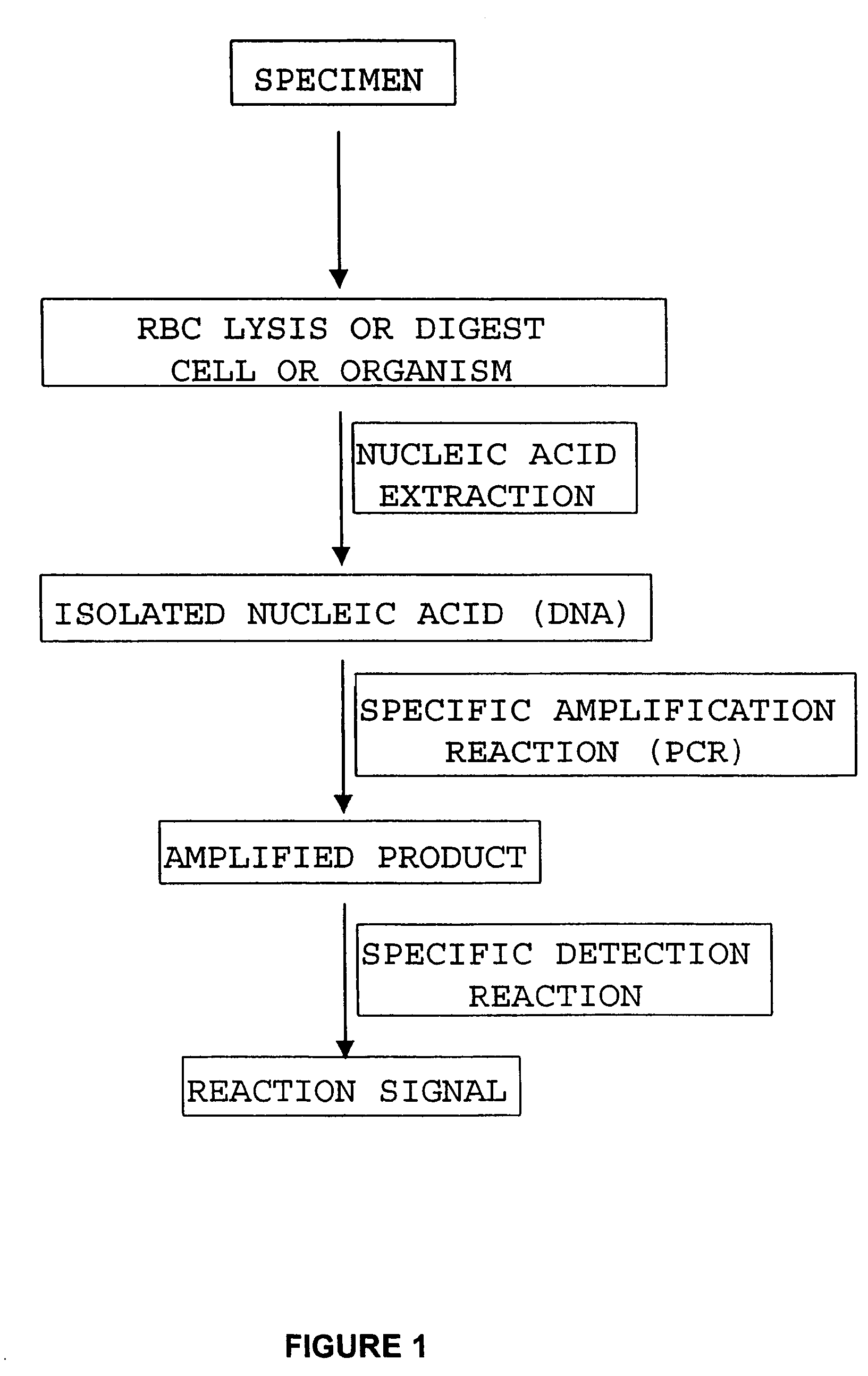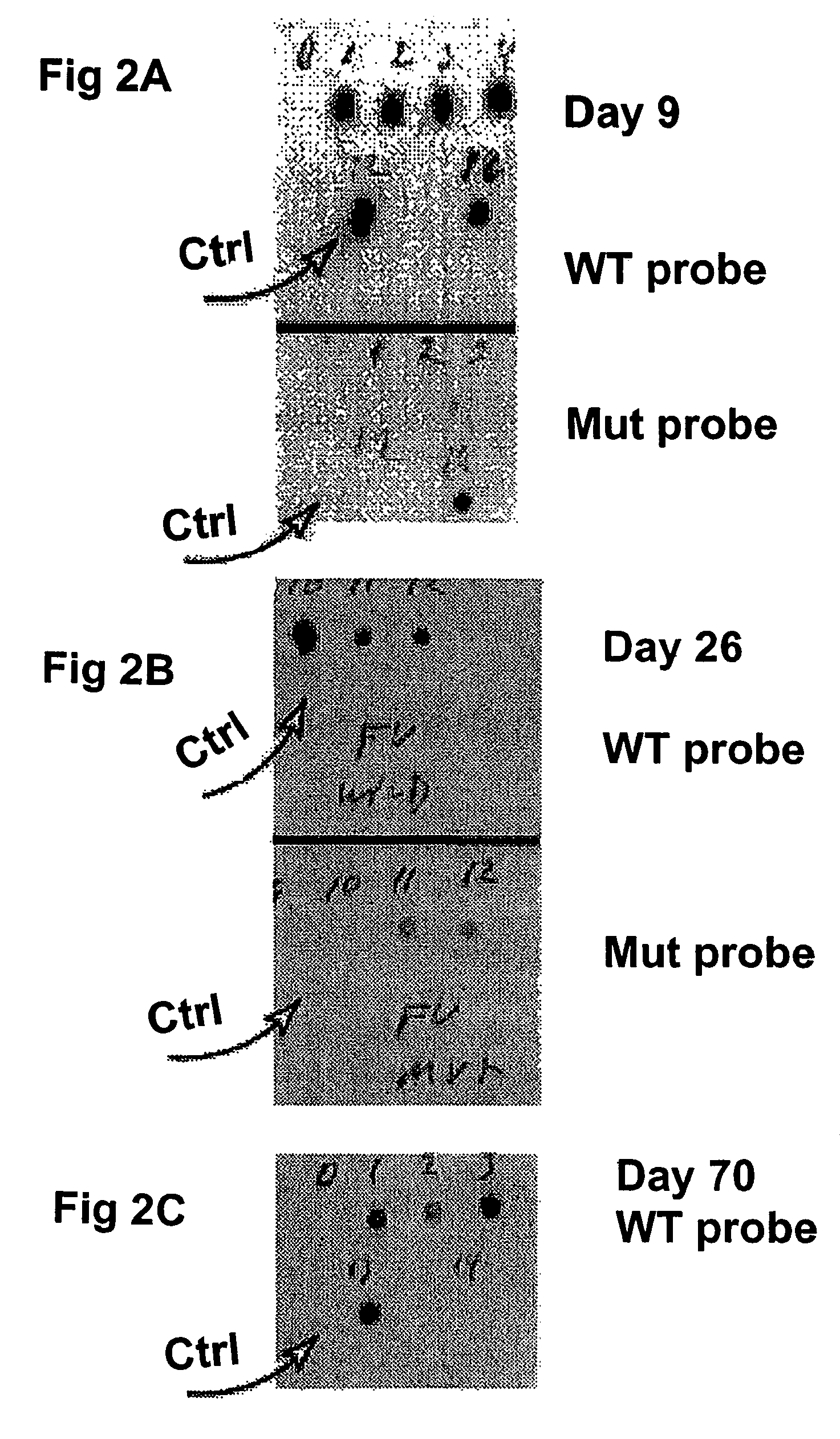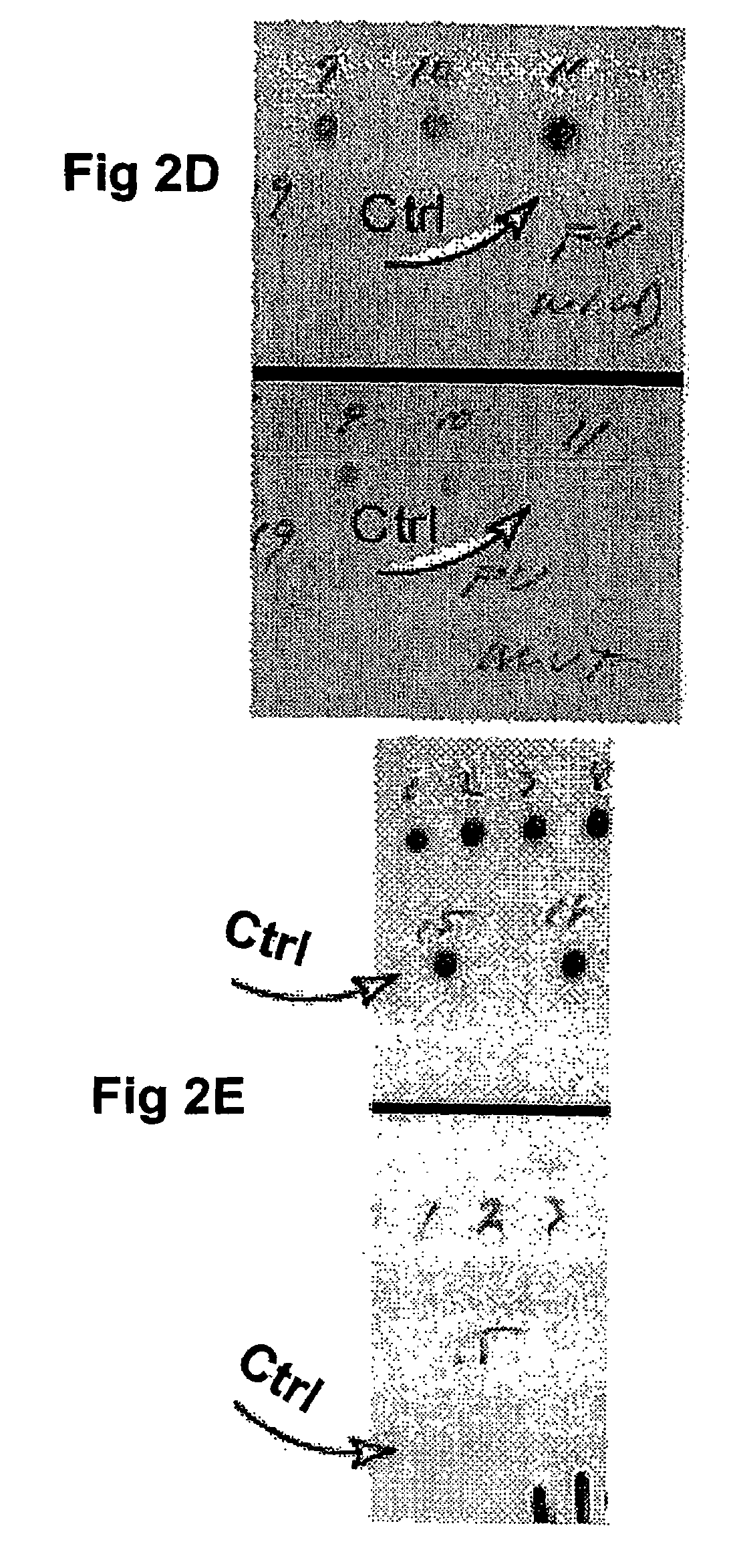Compositions and methods relating to nucleic acid reference standards
a reference standard and nucleic acid technology, applied in the field of nucleic acid reference standards, can solve the problems of defective proteins, defects that range from inconsequential to life-threatening, and materials that meet these requirements, but are lacking in the field of molecular pathology and genetic testing
- Summary
- Abstract
- Description
- Claims
- Application Information
AI Technical Summary
Benefits of technology
Problems solved by technology
Method used
Image
Examples
example 1
Preparation and Testing of Reference DNA Compositions
[0214]The experiments presented in this example may be summarized as follows.
[0215]The data disclosed herein describe the preparation of novel compositions comprising reference DNA and vector and the use of these compositions to validate the extraction protocol and the DNA detection steps in a clinical genetic assay.
[0216]The Materials and Methods used in the experiments presented in this example are now described.
Preparation of Nylon Microparticles as a Vector
[0217]Production of microparticles for use as solid support for immunoassay antibodies was described previously (McConway et al., 1986, J. Immunol. Methods 95:259-266). The method was modified for production of microparticles for use a nucleic acid binding agent. More specifically, two grams of Nylon 6 / 6 pellets (Scientific Polymer Products, 6265 Dean Parkway, Ontario, N.Y. 14519) were dissolved and 100 ml of concentrated hydrochloric acid (HCl) for 10 hours at room temperat...
example 2
Linearized and Non-linearized Plasmid DNA in Reference DNA Compositions
[0257]The experiments presented in this example may be summarized as follows.
[0258]The data disclosed herein describe the preparation of nucleic acid reference standard nucleic acid / binding agent compositions comprising linearized and non-linearized nucleic acid and the use of these compositions in genetic testing.
[0259]The Materials and Methods used in the experiments presented in this example are now described.
Preparation of a Nucleic Acid Reference Standard (Reference DNA-vector) Composition
[0260]FV plasmid DNA was diluted to 235 ng / ml, and nylon microparticles were prepared in a concentration of 40 mg / ml in a 0.2 M sodium acetate, pH 5.2 solution. Seventy-five microliters of the FV plasmid solution was added to 800 μl of the nylon microparticle suspension. After vortex mixing, the suspension was diluted to 10 ml with a storage solution (3 ml glycerol, 28.5 ml 0.026 M EDTA, pH 8.7). The mixture was vortex mixe...
example 3
Amine Modified Polystyrene Microparticles as the Vector in Reference DNA Compositions
[0268]The experiments presented in this example may be summarized as follows.
[0269]The data disclosed herein describe the preparation of nucleic acid reference standard (nucleic acid / binding agent) compositions, i.e., nucleic acid reference standard, comprising amine modified polystyrene as the binding agent and the use of these compositions in genetic testing.
[0270]The Materials and Methods used in the experiments presented in this example are now described.
Preparation of Reference DNA-vector Composition
[0271]Factor V (FV) plasmid DNA prepared as described previously elsewhere herein, was diluted to 23.5 ng / ml, salmon sperm DNA was prepared in a solution of 218 μg / ml. One and a half milliliters of the FV plasmid DNA solution was incubated with 50 mg of Polybead Amino 0.74 micron latex microspheres (Polysciences, Inc., Warrington, Pa.) for 5 minutes at room temperature. The sample was centrifuged an...
PUM
| Property | Measurement | Unit |
|---|---|---|
| pH | aaaaa | aaaaa |
| pH | aaaaa | aaaaa |
| volume | aaaaa | aaaaa |
Abstract
Description
Claims
Application Information
 Login to View More
Login to View More - R&D
- Intellectual Property
- Life Sciences
- Materials
- Tech Scout
- Unparalleled Data Quality
- Higher Quality Content
- 60% Fewer Hallucinations
Browse by: Latest US Patents, China's latest patents, Technical Efficacy Thesaurus, Application Domain, Technology Topic, Popular Technical Reports.
© 2025 PatSnap. All rights reserved.Legal|Privacy policy|Modern Slavery Act Transparency Statement|Sitemap|About US| Contact US: help@patsnap.com



